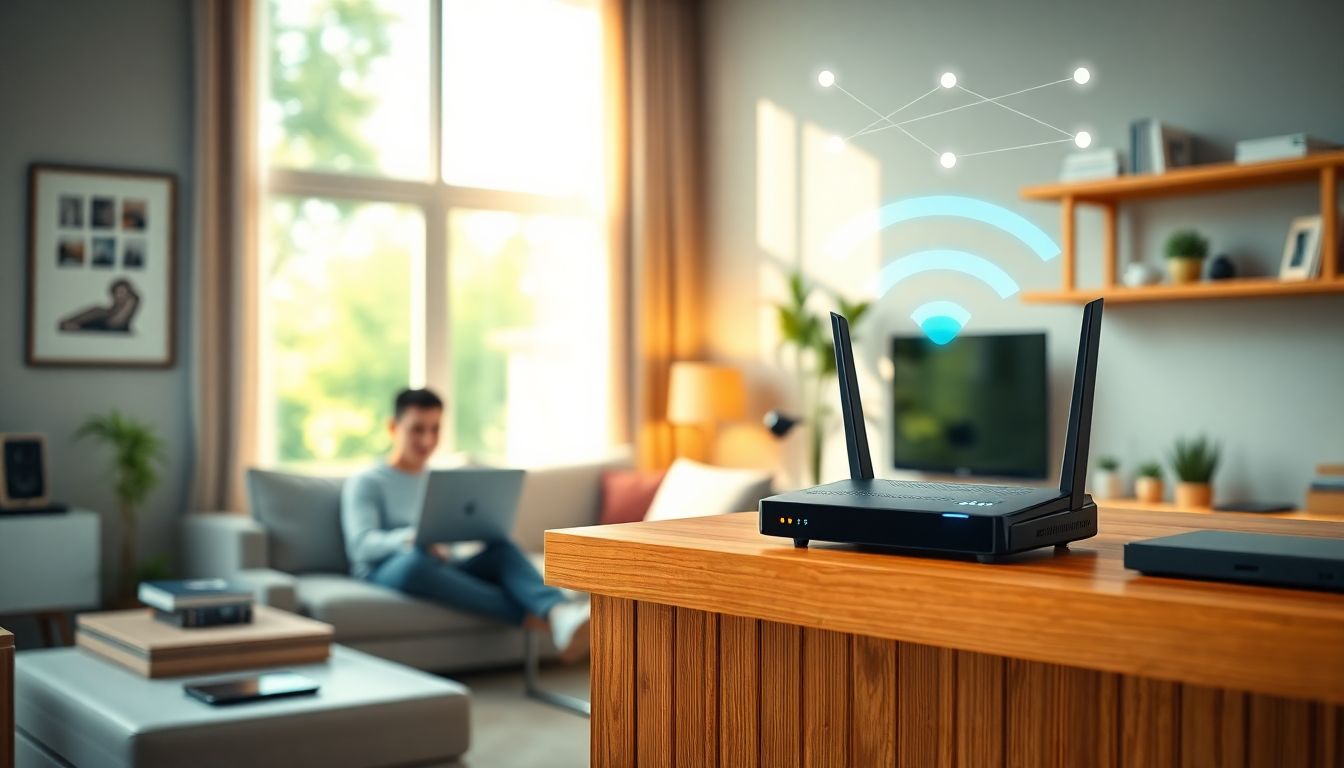
Easy Steps to Boost Your Wi-Fi Speed at Home
Introduction
A fast and reliable Wi-Fi connection is a must for today's homes. Whether you’re working from or streaming movies, slow internet can be a big pain. Buffering videos, lag in games, and dropped calls become common problems. Improving your Wi-Fi speed can make your online life easier and more fun. This article shares simple steps you can take now to get faster, more stable Wi-Fi in your house.
Assessing Your Current Wi-Fi Performance
Conducting a Speed Test
Before you make changes, see how fast your internet really is. Use free tools like Speedtest.net or Fast.com to check your download, upload speeds, and latency. If your speeds are much lower than what your plan promises, it's time to investigate. Knowing your current performance helps you spot issues and track progress after fixes.
Identifying Wi-Fi Dead Zones
Not all areas in your home get the same signal. Walk around with your phone or laptop and notice where the Wi-Fi drops or slows down. Use a Wi-Fi analyzer app to create a coverage map. This shows which rooms need stronger signals. Spotting dead zones helps you decide where to improve coverage.
Understanding Your Router’s Capabilities
Check what your router can do. Look up your model online to find the maximum speeds and features. Also, update your router’s firmware to ensure it runs smoothly and securely. Knowing your device’s limits helps you plan upgrades better.
Optimizing Router Placement and Hardware
Positioning Your Router for Maximum Coverage
Place your router in a central, open spot, not tucked in a closet or corner. Keep it elevated — on a shelf or high table — for better signal spread. Avoid placing it near metal objects, microwaves, or thick walls that block Wi-Fi. A good placement can boost your speed and signal range.
Upgrading Your Router
If your router is old or slow, consider upgrading. Newer models support Wi-Fi 6, which offers faster speeds and handles more devices. Look for dual-band routers, so you can use both 2.4 GHz and 5 GHz networks. A better router is a quick fix for slow Wi-Fi.
Using Range Extenders and Mesh Networks
Large homes may face coverage issues. Using Wi-Fi extenders or mesh systems can expand your Wi-Fi around the house. Mesh networks create a seamless connection across multiple nodes, reducing dead zones and boosting speed in every corner.
Configuring Your Wi-Fi Settings for Speed
Choosing the Right Frequency Band
Your router broadcasts on two main bands: 2.4 GHz and 5 GHz. The 2.4 GHz band covers more area but is often slower and more crowded. The 5 GHz band is faster but has less range. Use 5 GHz for activities like gaming or streaming, and 2.4 GHz for browsing or devices far from the router.
Changing Wireless Channel Settings
Wi-Fi channels can get crowded, slowing down your connection. Use apps like Wi-Fi Analyzer to find the clearest channel in your area. Then, log into your router and switch to that less congested channel. This simple change can significantly improve your speed.
Updating Router Firmware and Security Settings
Regularly update your router’s firmware. Updates fix bugs and can improve speed. Also, secure your network with WPA3 encryption if available. A secure and optimized network runs faster and stays safe from outsiders.
Managing Network Traffic and Connected Devices
Limiting Bandwidth-Heavy Applications
Video streaming, large downloads, or cloud backups eat up bandwidth. Schedule heavy tasks during off-peak times or limit their bandwidth. Many routers have Quality of Service (QoS) settings to prioritize essential devices, ensuring your critical work or streaming gets more speed.
Reducing Connected Devices
Too many gadgets can slow down your Wi-Fi. Disconnect unused devices like smart home gadgets or tablets. Consider scheduling heavy tasks on fewer devices at once. Managing your devices improves overall speed.
Setting Up Guest Networks
Create a separate guest network for visitors. This keeps their devices isolated and prevents them from hogging bandwidth. It also adds security to your main network, so you don’t have to worry about strangers slowing down your internet.
Troubleshooting and Additional Tips
Resetting and Rebooting Your Network
Sometimes, a simple restart of your router can fix slow speeds. Turn it off for 30 seconds, then restart. Regular reboots can clear glitches and keep your network running smoothly.
Using Wired Connections When Possible
Ethernet cables offer the fastest, most stable internet connection. Use wired connections for gaming or work-from-home devices. They don’t suffer from interference and provide consistent speeds.
Consulting ISP Support and Upgrading Services
If nothing helps, contact your internet provider. They can check for outages or issues. Upgrading your plan or hardware may be necessary if your current service doesn’t match your internet needs.
Conclusion
Boosting your home Wi-Fi is easier than you think. Start with positioning your router correctly and checking your current speeds. Upgrade or extend your network if needed. Configure your settings for maximum performance and manage traffic to prevent slowdowns. Regular updates and maintenance keep everything running smoothly. Implement these steps today, and enjoy faster, more reliable internet in your home. Better Wi-Fi means fewer frustrations and more fun online.